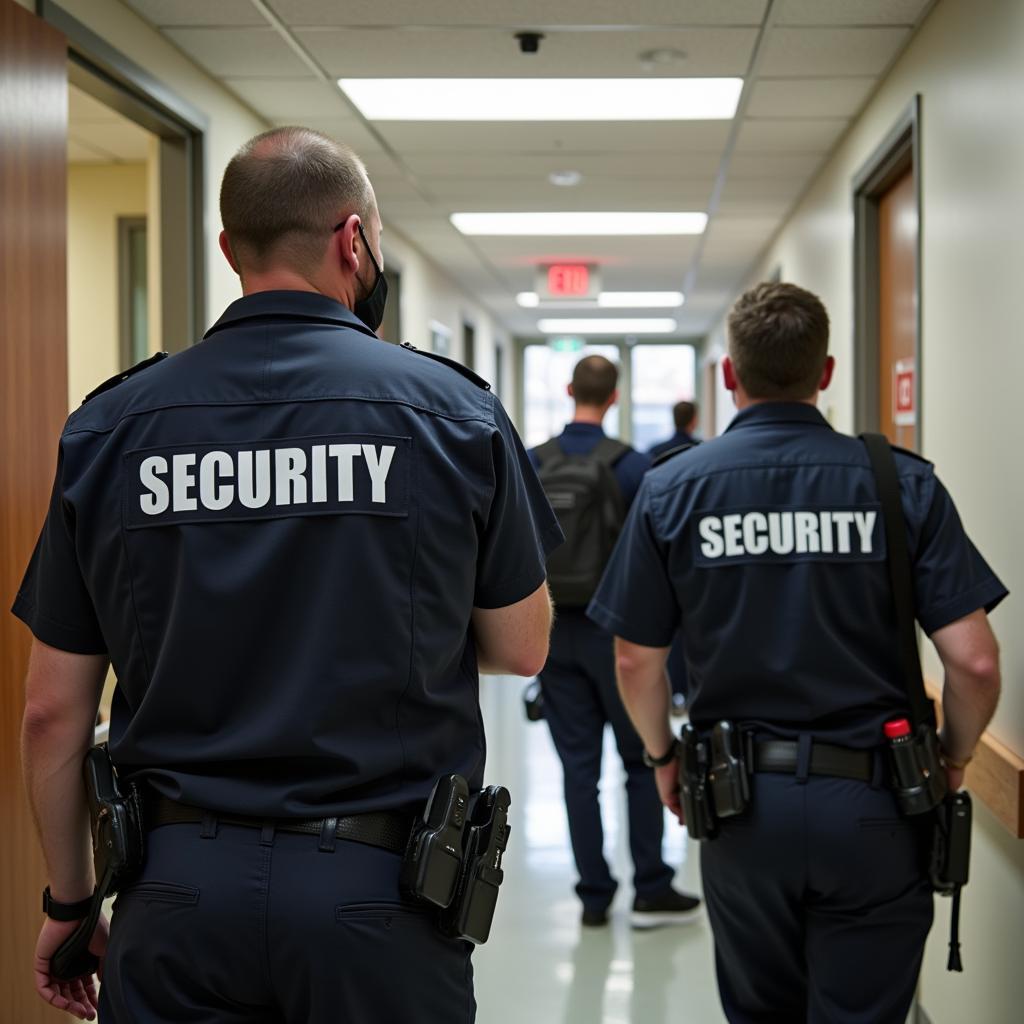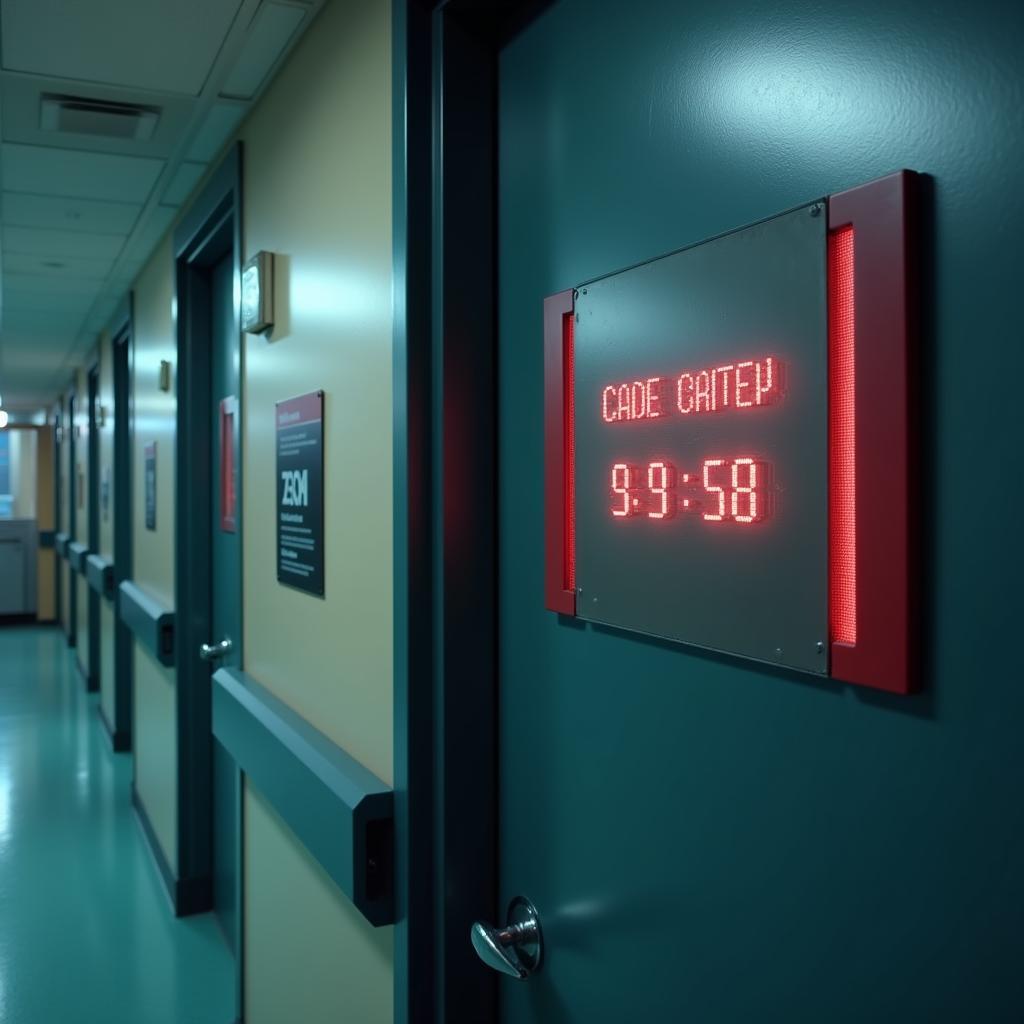Code Crimson in a hospital might sound alarming, but it doesn’t refer to a medical emergency like a Code Blue (cardiac arrest) or Code Red (fire). Instead, Code Crimson typically signifies a situation involving an infant or child abduction, or a potential abduction. It’s a proactive security measure designed to swiftly mobilize hospital staff and resources to prevent a potential tragedy.
 Hospital security personnel responding to a Code Crimson
Hospital security personnel responding to a Code Crimson
Understanding Code Crimson and its Importance
Hospitals are places of healing, but they are also busy environments with constant traffic. This makes them vulnerable to security threats, including the unthinkable – infant abduction. To combat this, hospitals implement Code Crimson protocols, which act as an immediate call to action for all personnel.
The primary goals of initiating a Code Crimson are:
- Swift Response: Time is of the essence in a potential abduction. Code Crimson triggers a rapid and coordinated response from security, staff, and even visitors to increase the chances of preventing the child from leaving the premises.
- Increased Awareness: The code heightens everyone’s vigilance. Staff are reminded to be extra observant of unfamiliar individuals and suspicious activities.
- Controlled Access: Code Crimson often involves temporarily locking down certain areas of the hospital, restricting movement in and out of the building, and closely monitoring exits.
 Hospital doors locked down during a Code Crimson
Hospital doors locked down during a Code Crimson
How is Code Crimson Activated?
Code Crimson is typically activated when:
- A child is reported missing.
- An unidentified person is seen acting suspiciously around children.
- There’s any credible threat of abduction.
Anyone who suspects a potential abduction should immediately report it to the nearest hospital staff member.
What Happens During a Code Crimson?
While specific procedures may vary between hospitals, common actions during a Code Crimson include:
- Announcement: A coded announcement will be made throughout the hospital, alerting staff to the situation.
- Security Deployment: Security personnel are immediately dispatched to secure exits, monitor surveillance footage, and investigate the situation.
- Staff Response: Nurses and other staff members are often tasked with checking their designated areas, securing any infants or children in their care, and reporting any observations.
- Visitor Cooperation: Visitors may be asked to remain in place or cooperate with security personnel’s instructions.
The Role of Technology in Code Crimson
Technology plays a crucial role in enhancing Code Crimson responses. Many hospitals utilize:
- Infant Security Systems: These systems use small, tamper-proof bands attached to infants, triggering alarms if the child is moved too far from their designated area.
- Surveillance Cameras: Strategically placed cameras throughout the hospital help monitor activity and can be crucial in identifying potential abductors or tracking movements.
- Access Control Systems: Electronic access systems can be quickly locked down, limiting access to certain areas of the hospital.
Prevention and Awareness are Key
While Code Crimson protocols are designed to handle potential abductions, prevention and awareness remain paramount. Parents and guardians can take proactive measures to protect their children:
- Never leave a child unattended.
- Be aware of your surroundings.
- Know the hospital’s security procedures.
- Report any suspicious activity immediately.
Conclusion
Code Crimson is a critical safety measure employed by hospitals to address the serious issue of infant and child abduction. By understanding the purpose, procedures, and our individual roles during a Code Crimson, we can collectively contribute to creating a safer environment for the most vulnerable patients. Remember, vigilance and swift action are key to preventing these heartbreaking situations.
For any concerns about your child’s safety or the hospital’s security protocols, please don’t hesitate to contact our security team at 02437655121 or visit us at 298 Cầu Diễn Street, Minh Khai, Bắc Từ Liêm, Hanoi, Vietnam. We are here to address your questions and ensure a secure environment for all.